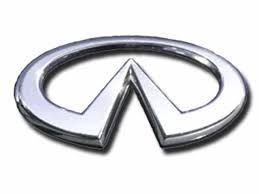Q45 V8-4.5L (VK45DE) (2002)
/Page-555001.png)
Refrigerant: Testing and Inspection
Checking For Refrigerant Leaks
Visual Inspection
CHECKING FOR REFRIGERANT LEAKS
Perform a visual inspection of all refrigeration parts, fittings, hoses and components for signs of A/C lubricant leakage, damage and corrosion. A/C
lubricant leakage may indicate an area of refrigerant leakage. Allow extra inspection time in these areas when using either an electronic refrigerant leak
detector or fluorescent dye leak detector.
If dye is observed, confirm the leak with an electronic refrigerant leak detector. It is possible a prior leak was repaired and not properly cleaned.
When searching for leaks, do not stop when one leak is found but continue to check for additional leaks at all system components and connections.
When searching for refrigerant leaks using an electronic leak detector, move the probe along the suspected leak area at 1 to 2 inches per second and no
further than 1/4 inch from the component.
NOTE: Moving the electronic leak detector probe slower and closer to the suspected leak area will improve the chances of finding a leak.
Checking For Leaks Using Fluorescent Leak Detector
Fluorescent Dye Leak Detector
PRECAUTIONS FOR FLUORESCENT DYE LEAK DETECTION
The fluorescent dye leak detector is not a replacement for an electronic refrigerant leak detector. The fluorescent dye leak detector should be used in
conjunction with an electronic refrigerant leak detector (J-41995) to pinpoint refrigerant leaks.
For your safety and your customer's satisfaction, read and follow all manufacturer's operating instructions and precautions prior to performing the work.
CHECKING SYSTEM FOR LEAKS USING THE FLUORESCENT LEAK DETECTOR
1. Check A/C system for leaks using the UV lamp and safety glasses (J-42220) in a low sunlight area (area without windows preferable). Illuminate
all components, fittings and lines. The dye will appear as a bright green/yellow area at the point of leakage. Fluorescent dye observed at the
evaporator drain opening indicates an evaporator core assembly (tubes, core or TXV) leak.
2. If the suspected area is difficult to see, use an adjustable mirror or wipe the area with a clean shop rag or cloth, then check the cloth with the UV
lamp for dye residue.
3. Confirm any suspected leaks with an approved electronic refrigerant leak detector.
4. After the leak is repaired, remove any residual dye using dye cleaner (J-43872) to prevent future misdiagnosis.
5. Perform a system performance check and verify the leak repair with an approved electronic refrigerant leak detector.
NOTE: Other gases in the work area or substances on the A/C components, for example, anti-freeze, windshield washer fluid, solvents and lubricants,
may falsely trigger the leak detector. Make sure the surfaces to be checked are clean. Clean with a dry cloth or blow off with shop air.
Do not allow the sensor tip of the detector to contact with any substance. This can also cause false readings and may damage the detector.
Checking For Leaks Using Dye Injection
DYE INJECTION
(This procedure is only necessary when re-charging the system or when the compressor has seized and was replaced.)
1. Check A/C system static (at rest) Pressure. Pressure must be at least 345 kPa (50 psi).
2. Pour one bottle (1/4 ounce /7.4 cc) of the A/C refrigerant dye into the injector tool (J-41459).
3. Connect the injector tool to the A/C LOW PRESSURE side service fitting.
4. Start engine and switch A/C ON.
5. When the A/C operating (compressor running), inject one bottle (1/4 ounce /7.4 cc) of fluorescent dye through the low-pressure service valve
using dye injector tool J-41459 (refer to the manufacture's operating instructions).
6. With the engine still running, disconnect the injector tool from the service fitting.
CAUTION: Be careful not to allow dye to spray or drip when disconnecting the injector from the system.
